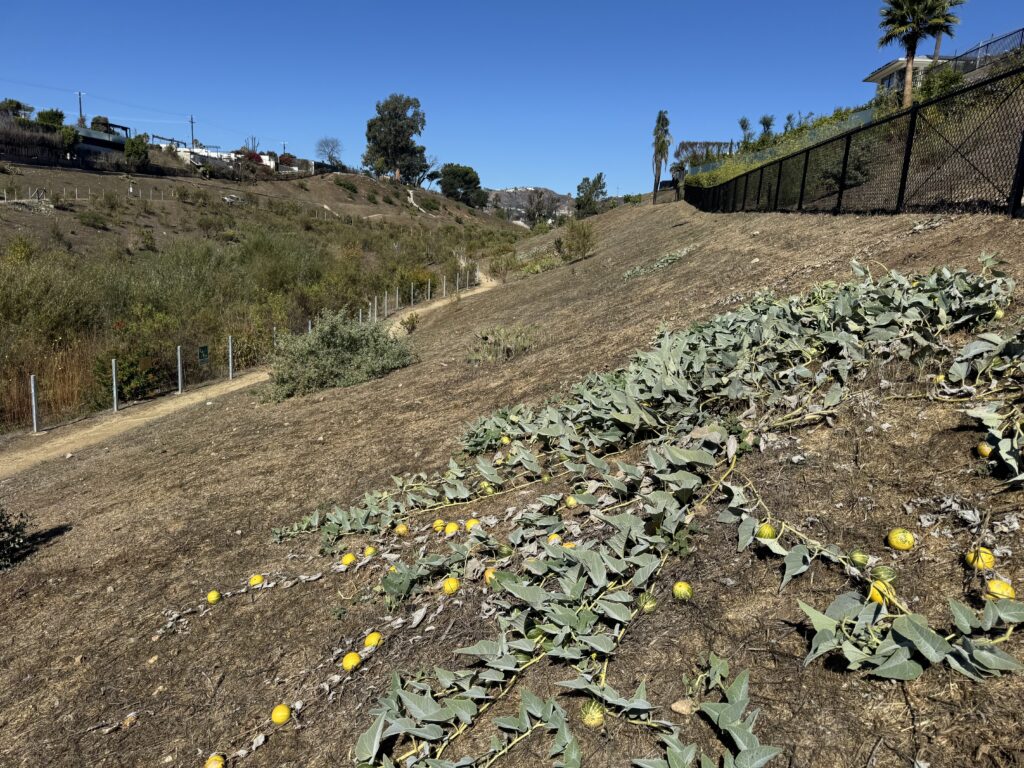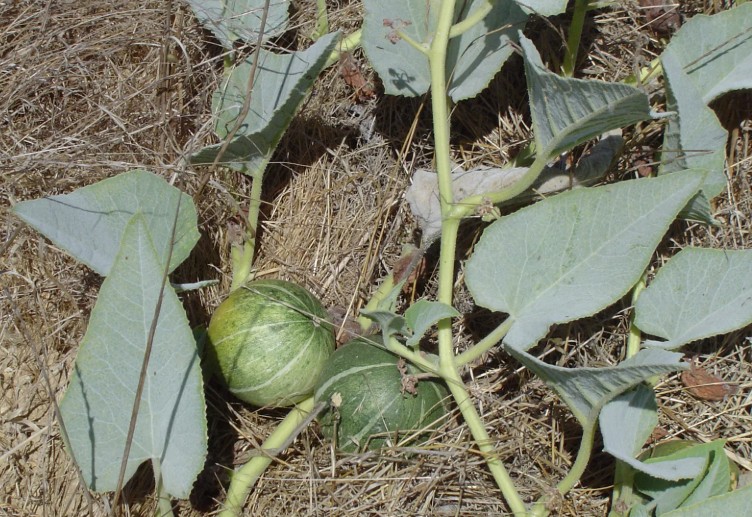After hearing reports that the fence was being replaced in George Wolfberg Park, CTN took a walk in Potrero Canyon yesterday to see.
Yes, the black wire fence that surrounded the perimeter of the canyon was being taken down and replaced with black wire fence – same height, same location. When a worker was asked why the fence was being replaced, he said, “it had burned.” But the old and new fences were indistinguishable. Both were still black wire.
But, one of the really exciting finds was the buffalo gourd. Its scientific name is Cucurbita foetidissima, and the plant grows wild in central and southwestern United States including Arizona, Arkansas southern California, Colorado, Kansas, Missouri, New México Oklahoma, Texas and northern Mexico. Foetidissima means most unpleasant smell.
The gourd, which is also called stinking gourd, Missouri gourd, wild gourd and coyote Gourd, requires little water, is drought tolerant and a perennial.
According to Texas Beyond History, ‘Both the root and the fruit/seed of the buffalo gourd were utilized by indigenous North Americans. They valued the root for its medicinal properties, and the seeds as a food source.
“The fruit and roots contain cucurbitacins, a group of triterpenoid glycosides that imparts a very bitter taste, and that can be poisonous in high concentrations. Cucurbitacins are produced by all members of the squash family, but they have been greatly reduced in domesticated squashes and cucumbers. The buffalo gourd, however, is rich in cucurbitacin and consumption of this plant requires some processing.
Called a cousin of the pumpkin, Native Americans used tea made from the pulverized roots to speed up labor, and roots served to induce vomiting and as laxatives.
Jennifer Mikalovic writes in Plant Spotlight: Buffalo Gourd, A Native Plant to Celebrate this Fall click here that “seeds and flowers were ground into powder to reduce swelling, and mashed plants were applied as poultices to treat skin conditions like sores. Buffalo gourds also had decorative uses; the dried gourds were often painted for ornamental purposes. The plant’s tuberous root was used to make soap, and while the young gourds were edible and prepared similarly to squash, the mature fruits were not.”
The George Wolfberg Park is below the Palisades Rec Center 851 Alma Real and the walking trails are open to the public.



Sue,
did the photographer send the photo to iNaturalist.com? One of the projects there covers the regrowth of vegetation in the LA burn areas. I’ve been taking photos and sending them every time I come up to see how my home is progressing. The photos go in and other projects can pull them to add to their data collections. It’s citizen science.
Nancy,
I was the photographer and I didn’t sent a photo–if you want to pass the photo on, please do. I take a look next time you go to Wolfberg park–really heartening.
Sue